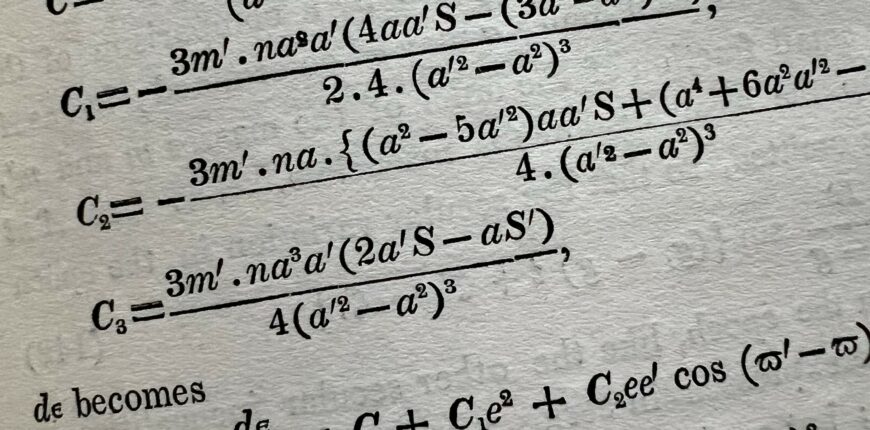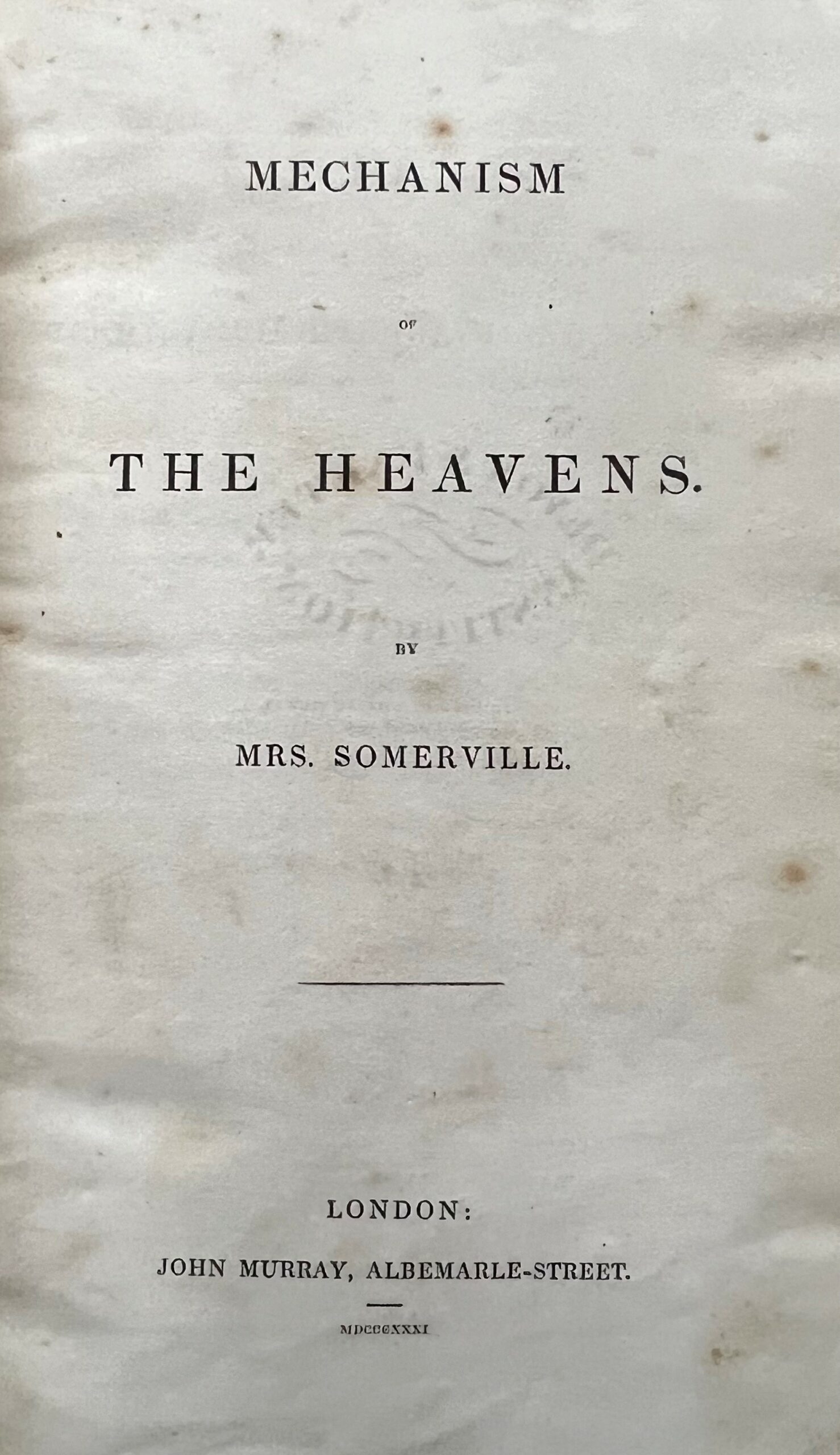Mary Somerville (1780-1872)

The mechanism of the heavens (1831)
 Mary Somerville was an exceptional scientist and polymath. She studied mathematics and astronomy and in 1835 was elected one of the first female Honorary Members of the Royal Astronomical Society alongside Caroline Herschel (1750–1848).
Mary Somerville was an exceptional scientist and polymath. She studied mathematics and astronomy and in 1835 was elected one of the first female Honorary Members of the Royal Astronomical Society alongside Caroline Herschel (1750–1848).
An inheritance from the death of her first husband gave her financial independence and the freedom to pursue her intellectual interests in mathematics and astronomy. Her mentor, William Wallace (1768–1843), a Scottish mathematician and astronomer, encouraged her to study the work of French mathematician Pierre-Simon Laplace (1749-1827) and she found further inspiration in other Continental scientists.
Her second husband, Dr William Somerville (1771–1860), further encouraged her studies and his subsequent election to The Royal Society provided opportunities for socialising with the foremost intellectuals of their day. Somerville published her first scientific paper in the Proceedings of the Royal Society in 1826. In 1831, she produced an extended translation of Laplace’s Mécanique céleste for the Society for the Diffusion of Useful Knowledge, published as The mechanism of the heavens. The book immediately secured her reputation and was used as a university textbook until the 1880s.
‘Simple as the law of gravitation is, its application to the motions of the bodies of the solar system is a problem of great difficulty, but so important and interesting, that the solution of it has engaged the attention and exercised the talents of the most distinguished mathematicians; among whom Laplace holds a distinguished place by the brilliancy of his discoveries … his splendid work on the Mechanism of the Heavens … [embodies] the results of not only his own researches, but those of so many of his illustrious predecessors and contemporaries, [that it] must ever remain, as he himself expressed it to the writer of these pages, a monument to the genius of the age in which it appeared.’
